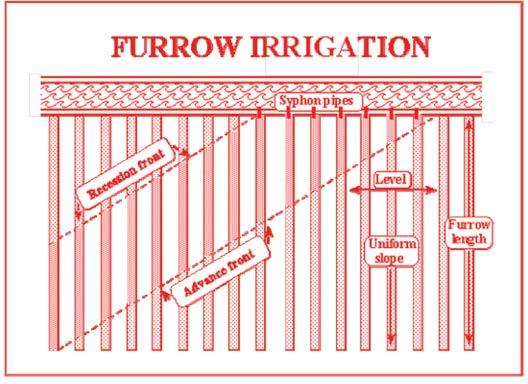
3 minute read
Irrigation made easy Part 9: Flood irrigation
from ProAgri Zambia 59
by ProAgri
Irrigation made easy part 9:
Flood irrigation
Advertisement
100
80
60
40
20
0
Irrigation efficiencies
Very good management Normal Poor management
All around the world the traditional system of irrigation through flooding the lands is still the most widely used method. Flood irrigation systems are cheaper than other types of systems, but management is always critically important. Unless the system is well maintained and controlled, the irrigation efficiencies achieved are likely to be very low.
1 BAR 2 BAR

3 BAR
Labour usage in flood irrigation is high
Labour usage with all flood irrigation systems is high. At least three labourers per ten-hectare block will be needed to control the distribution of water in the field.
Maintenance of flood irrigation systems should be done on a regular basis
Maintenance is important with flood irrigation systems. Systems should not be expected to last for more than five years without major repairs and upgrading of systems. Minor maintenance operations will be required on a regular basis, with not more than one week between operations.
Low pressure is sufficient for flood irrigation
Flood irrigation systems normally operate with open channel flow and flow across the land. The operation of these systems does not involve supplying water under pressure. Pumping may be needed to transfer water from the source into canals. Low pressures can also develop in piped distribution networks.

Recession front

Advance front
Syphon pipes
Level
Uniform slope
Furrow lenght
Basin irrigation is the simplest form of flooding. A field is divided into a series of flat-bottomed basins. The soil is levelled and earth bunds are built to create ponds. Water is diverted to fill the basin and infiltrates downwards from a level pool of even depth. The basin size is determined by soils, stream-size and application. Furrow irrigation is the most widely used method of irrigating row crops. Water no longer flows over the entire soil surface, but is confined to small channels between the crop rows. Furrows will normally be evenly sloped and flow directly away from the source canal. Furrow lengths will be determined by soil type, irrigation depth, stream size and slope. Water moves both downwards and sideways from the furrow to wet the root zone of crops planted on the ridge between furrows.
Recession
Advance Level

Uniform Border
slope length
Level furrow along the contour
FURROW ACT AS SMALL, ELONGATED BASINS

Flow control structure Distribution canal
Border irrigation divides the field into strips of land. The bed has a uniform slope away from the supplying canal, but is level in cross-section. Borders are recognised by their characteristic long, narrow shape. Border irrigation can be adapted to suit many crops, soils and farming practices. The length of the beds will be determined largely by soil type, stream size, irrigation depth and slope. The stream size (flow rate) will be strongly influenced by slopes, crop type and bed width. The base slope can be more level at the start and end of the bed to assist with initial spreading of the water and final ponding (to ensure even infiltration). Short-furrow irrigation involves the creation of a series of long and narrow basins aligned along the contour. The system design and management are the same as for basin irrigation. The distribution of water occurs similarly to furrow irrigation. Of all types of flood irrigation systems, short-furrow (or basin-furrow) systems are best suited for use by small-scale farmers and farmers with less formal education and training. Management and maintenance of short-furrow irrigation systems are relatively simple and, as long as the capacity of individual basins is correctly designed, scheduling of fixedapplication irrigations is also easily achieved. Short-furrow systems are, however, usually more labour intensive than other flood irrigation systems.












